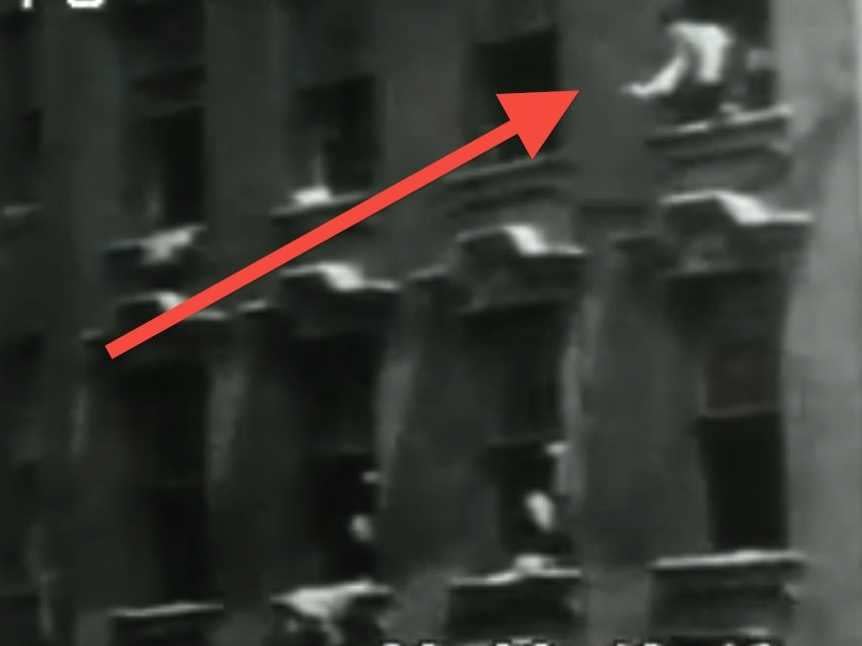These incredible images show how Wall Street traded before the Bloomberg terminal

Ever hear of curb trading?
Today’s traders are spoiled by their Bloomberg terminals.
Back in the day, before broadband fired live quotes and analysis straight to our smartphones, people used to read bid-ask spreads off of chalkboards and historical data off of miles of ticker tape.
We decided to go back in time to see how trading was done in the pre-Bloomberg terminal era. Even before ticker tape was a thing.
With the help of images from the Museum of American Finance in New York, we put together a brief, visual history of trading technology, from ticker tape to the present.
Editor’s Note: Former Business Insider writer Rob Wile contributed to the original version of this feature.
Brokers used to call the main trading room in downtown New York “The Curb Exchange.” This was before it became the American Stock Exchange.

Photo from 1915.
Most of the time, deals would be conducted out of windows to traders on curbs via hand singles.

The traders were hardcore. Here they are on the Curb Exchange in the middle of a snowstorm.

You can see how things actually looked like during curb trading in this 15 second video.
The first stock ticker — introduced in November, 1867 — was just a modified telegraph receiver. Thomas Edison later patented a widely-used updated version.

Some people saw the tickers as a exciting novelty.

Print advertisement for “Duke’s ‘Preferred Stock’ Cigarettes.”
But tickers were also considered a symbol of inequality. This 1911 image from Life Magazine shows a man studying stock prices as “the losers” point at him from across the room.

Telegraph wires (many of which would have connected tickers) created a tech-y canopy above downtown Manhattan.

Photo circa late 19th century.
By 1926, a broad-sheet version had been developed by Dow Jones. Here’s a fancy Art Deco version with a clipboard.

Here’s ticker tape from October 29, 1929, or Black Tuesday, showing the first trades on that historic day. (You can see the date on the top left.)

And here’s how that day ended. Notice the volume steadily increasing throughout the day.

Here’s a photo of trader on Wall Street in a raincoat at a trading post.

Ticker tape actually persisted all the way into the 1970s. With the Dial Teleregister (created in 1932) you could dial-in a stock, and its bid and ask would be displayed.

Here’s a more handsome version.

The industrial version — the quotation board — marked the end of chalkboards on Wall Street.

Here’s how it worked. From a central transmitting station in New York City, Teleregister provided data for the closing, opening, high and low prices to over 400 boards throughout the country.

This is one section of the aforementioned Central Transmitting Room that controlled Teleregister prints.

This is probably the coolest image we found: A 1930s broker’s office at the firm of Benjamin Block & Co., featuring various ticker tape machines and stock quote board.

AKA your steampunk Bloomberg terminal.
The stock exchange had a “Quotation Room” where people would answer requests for stock prices within 60 seconds (1943).

According to a caption on the back of the photo, “due to manpower shortage, more and more women are finding employment on the ‘Street’.” Remember, this is during World War II.
Versions of these persisted until digital displays came along. Here’s what one looked like in 1955.

But tickers still existed well into the latter half of the century. Here’s a woman at checking “high speed tape and quotations.”

Source: EliteTrader
This nifty contraption is a Trans-Lux “Personal Ticker.”

“In the 70s if you had money to spend you can avail yourself” of one, according to an EliteTrader.com commenter.
By the 1970s, things finally start to get more familiar looking. Here’s Bunker Ramo’s video terminal. Bunker Ramo is now owned by Honeywell.

A woman at a brokerage’s terminal in the ’70s, using one of the last ever ticker machines. It was considered “high speed” at 900 characters per minute.

Here’s the description from EliteTrader: “Here is a girl working on a teletype one of the KSR series, notice the two Ultronic’s and the high speed 900 series ticker. (900 characters per minute) Those were the last ever ticker machines built. Oh and back in the days you had different tapes then in the mid 1970s and up you had the consolidated tape but you still had the last sale tape and the bid and ask tape.”
By the eighties, the big time tech player was Quotron. Here’s what one of their terminals looked like on Black Monday, October 19, 1987.

Quotron was a household name back in the day. They were eventually sold to Reuters.

“Up until 1990, many of the quote vendors forced customers to use proprietary hardware so they would not lose control over the data. Quotron and ADP had a little truck that rode around Manhattan delivering hardware,” according to one account.
Behold, the handheld Quotron machine.

Today, trading desks are significantly more powerful computers and can crunch data way faster than even 30 years ago.

…but then again, they’ll never be as cool as this.

And take a look at…

16 fascinating facts about North Korea
The post These incredible images show how Wall Street traded before the Bloomberg terminal appeared first on Business Insider.

 Yahoo Finance
Yahoo Finance 
